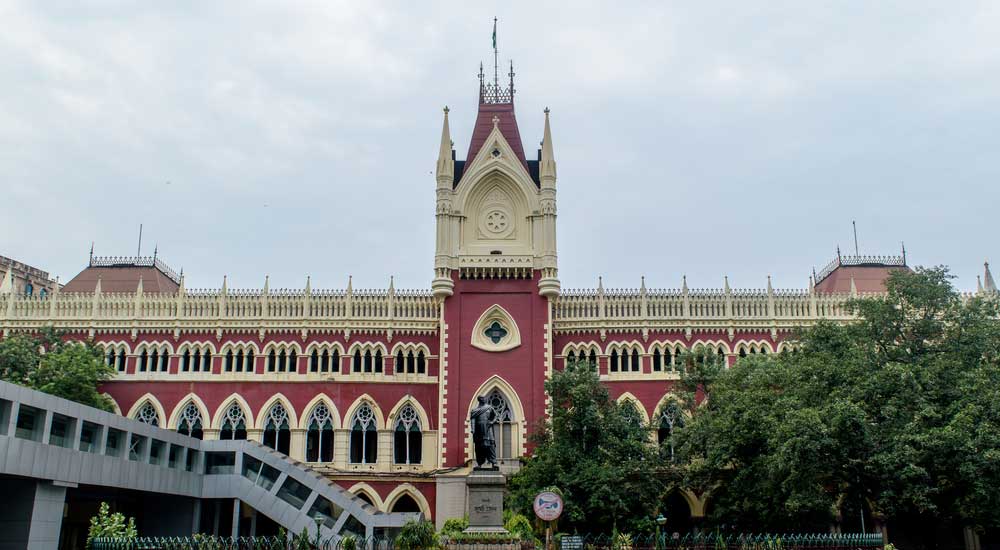The high court has admitted a public interest litigation filed by citizens’ groups seeking to know the parameters set by the Calcutta Municipal Corporation (CMC) to downgrade or delist a heritage structure.
The bench of Chief Justice Thottathil B. Nair Radhakrishnan and Justice Arijit Banerjee admitted the PIL on Friday and asked the municipal corporation to not delist or downgrade any heritage structure till further orders.
The petition has been filed by Calcutta Architectural Legacies, founded by author Amit Chaudhuri, and the Indian National Trust for Art and Cultural Heritage.
The matter is likely to be heard in September. Till then the heritage status of enlisted buildings cannot be downgraded and no structure can be taken off the corporation’s heritage list.
Also, the buildings that have been delisted or downgraded cannot be pulled down till further orders.
The petition mentioned that the corporation did not cite any “cogent reason” for downgrading the heritage status of Old Kenilworth Hotel, on Little Russel Street. The hotel was later demolished.
The petition added that the CMC had downgraded or delisted buildings without the mandatory approval of the state government.
Siddhartha Mitra, the lead advocate for the petitioners, told Metro that the petition had been admitted and the court passed an interim order.
“The court has admitted the petition and given the respondents (the CMC and the state government) six weeks to file their affidavits. We have been given another two weeks to file our reply to the affidavits,” Mitra said.
“The court has also asked the CMC to not delist or downgrade any heritage building till further orders. Besides, no action can be taken in respect of buildings that have been downgraded or delisted.”
The CMC had in 2009 published the “Graded List of Heritage Buildings”. The structures on the list are split into three grades — I, II and III. Grade II was further divided into IIA and IIB.
The published document, available on the CMC’s website, mentions that “no external change will be permissible” for Grade I buildings. For Grade IIA buildings, “new construction… in the open land within the premises in compatible manner with the heritage building” is allowed and for Grade IIB, “horizontal and vertical addition and alteration” is allowed.
Only Grade III buildings can be demolished, “where the structure is having no architectural importance”.
The CMC’s heritage conservation committee is the final authority to take any decision on downgrading or delisting any heritage structure.
Several heritage enthusiasts have complained that the committee works arbitrarily and downgrades or delists buildings to facilitate construction, an allegation the corporation has denied.
Chaudhuri, who has been writing and spreading awareness about Calcutta’s inherited architectural heritage for several years, said they were forced to approach the court after repeated attempts to elicit a response from the civic authorities and the government failed.
“I had written to the mayor and the chief minister in 2015 but never got a response. Last year, we organised a protest march, yet nothing happened,” said Chaudhuri.
He said he hadn’t noticed any “slightest attempt from the civic authorities to address the concerns”.
A civic official claimed there were some enlisted heritage buildings that did not deserve to be on the graded list.
“A building gets the heritage tag based on its unique architectural style, historic events that took place there or if it was associated with a historical figure in a significant way,” the official said.
“There are many buildings on the list that cannot be called heritage structures based on these parameters. What can we do if their owners request us to delist the buildings saying those would collapse
because they could not afford their upkeep?” a senior CMC official asked.
Chaudhuri, however, demanded that the reasons for downgrading or delisting a building be made public. “If the authorities feel one building should be downgraded or removed from the list, why don’t they make the reasons public? Forget the reasons, even the composition of the heritage conservation committee is not in public domain,” he said.
Another heritage enthusiast said that while the committee should be protecting the heritage of the city, in reality it was doing the opposite.
“A heritage conservation committee is supposed to expand the list by doing more research. Here they are reducing the list,” he complained.











